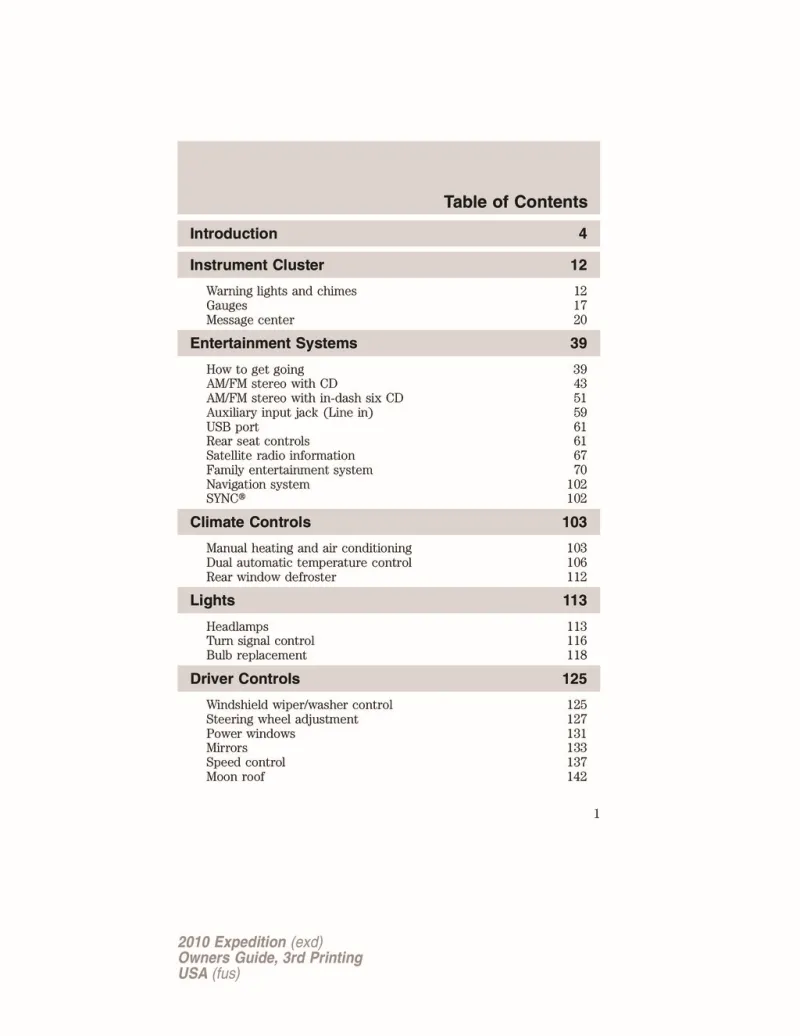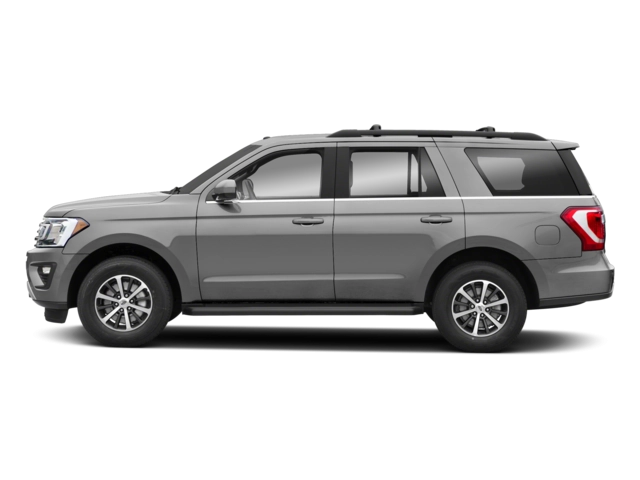2010 Ford Expedition Owner's Manual

Table of Contents
2010 Ford Expedition Overview
Introduction
The 2010 Ford Expedition is a robust full-size SUV designed to cater to families and adventurers alike. With its spacious interior, powerful performance, and advanced technology, the Expedition stands out as a versatile vehicle for both daily commutes and weekend escapades. Built on a sturdy platform, this SUV seamlessly combines comfort and capability, making it an optimal choice for those seeking reliable transportation without sacrificing style or functionality.
Powertrains
The 2010 Ford Expedition is equipped with a formidable 5.4-liter V8 engine, providing an impressive 310 horsepower and 365 lb-ft of torque. This powerful engine is paired with a smooth 6-speed automatic transmission, ensuring responsive performance on both highways and rugged terrains. The Expedition also offers two-wheel and four-wheel drive options, allowing for enhanced traction and stability in various driving conditions. Capable of towing up to 9,200 pounds, it makes hauling trailers and boats a breeze.
Trims
The 2010 Expedition comes in three distinct trim levels: XLS, XLT, and Limited. The XLS serves as the base model, featuring essential amenities such as air conditioning and a basic audio system. The XLT enhances the experience with added features like power-adjustable seats and premium sound. The top-tier Limited trim boasts luxury touches, including leather upholstery, navigation, and advanced safety features, making it the ideal choice for families who prioritize comfort and convenience.
Features
Inside the 2010 Expedition, drivers and passengers are greeted with a spacious cabin that accommodates up to eight passengers. The vehicle comes with a variety of standard and optional features, such as rear parking sensors, a rearview camera, and a premium audio system. Also available are retractable running boards and a rear entertainment system, adding to the family-friendly nature of this SUV.
Owner's Manual
The owner's manual for the 2010 Ford Expedition is an essential resource, providing detailed information regarding maintenance, safety, operating procedures, and features. This comprehensive guide ensures that owners can maximize their driving experience while maintaining the vehicle's performance for years to come.
User manual download
The Ford Expedition owner manual for the 2010 model year is to be found in PDF downloadable format on this page. The owner manual for the model year 2010 is free and in English, but the repair manuals are usually not easy to get and may cost more.
Manual Questions
Fill the form below and someone will help you!

